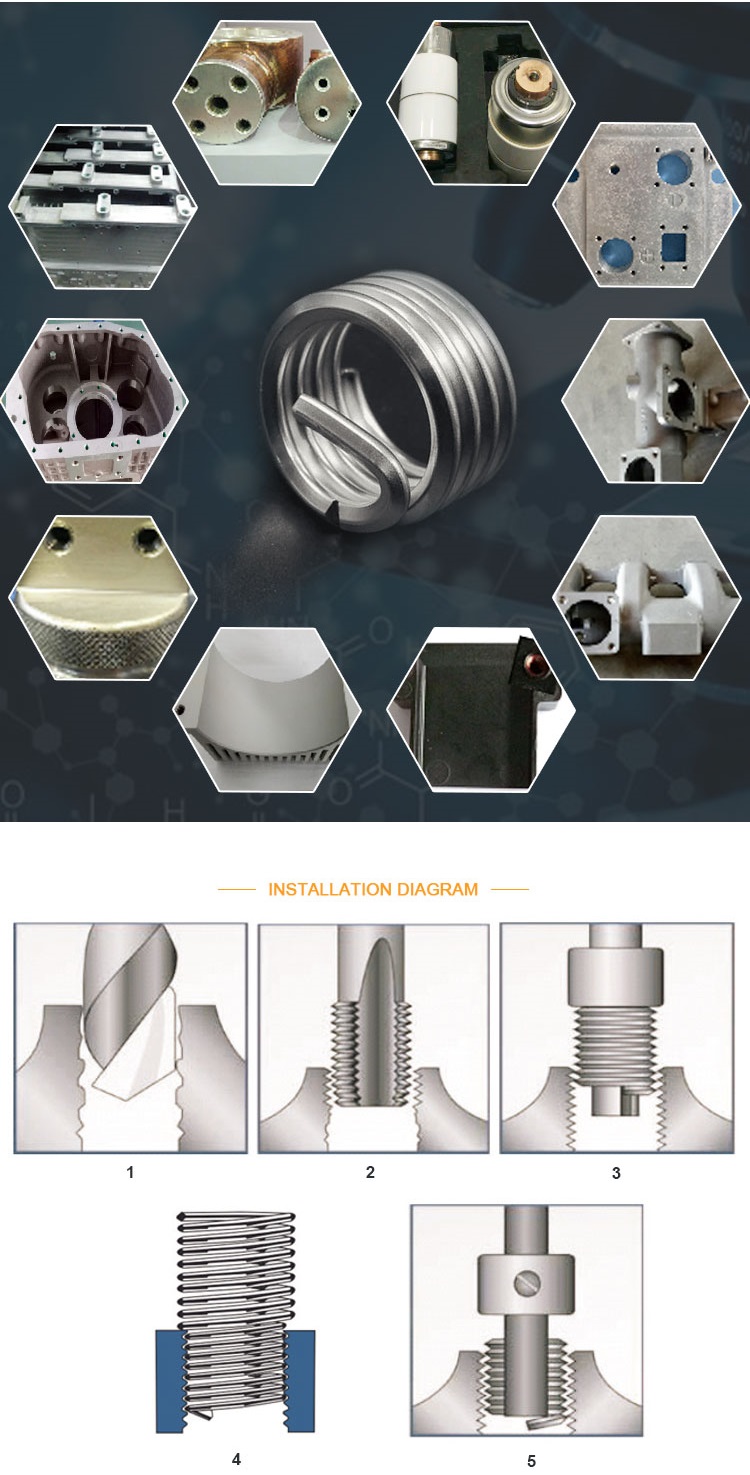
Active Member
|
[China]

Address: NO.10 High-tech Road High-tech Zone, Xinxiang City, Henan Province P.R.China (Zip code:453000)
Contact name:Grand

Xinxiang Flight Fasteners Co., Ltd. |
|
Prevent Loosening Thread Inserts Screw Lock MS21209 For Radiator Or Gearbox
Information
Wire thread insert made of high strength, high-precision, smooth
surface of the cold-rolled stainless steel rod working diamond
formed by the helical coil, a threaded hole embedded low-strength
aluminum, magnesium alloy, iron, steel, glass, plastic and other
materials of construction of the wire thread insert, The thread can
be protected to prevent the screw hole from being damaged by
vibration, impact, abrasion, rust and other problems, and greatly
extend the service life of the substrate.
"What is the difference between ordinary wire thread inserts and
locking wire thread inserts?
A. Ordinary wire thread insert symbol "FR", a multi-turn spiral
coils, by selecting a reasonable installation length, formed
resilient connection between the screw threads and the base body,
thread manufacturing to eliminate errors and improve the connection
strength with the conventional liner Compared with the sleeve, the
additional volume and weight are reduced.
B. Locking type wire thread inserts, marked "SL", are formed by one
or more polygonal non-deformed rings forming a locking edge, which
can fasten the assembly screws and prevent loosening, and has all
the characteristics of ordinary thread inserts.
Principle
The locking wire thread insert is a new variety developed on the
original basis of the ordinary wire thread insert. There are 1 to 2
turns of pentagonal or hexagonal shape in the middle of the locking
type wire screw sleeve. When the bolt is screwed halfway into the
threaded hole, the head of the bolt hits the locking ring. Some
other conventional locking devices have superior locking
performance and higher strength, and can be disassembled
repeatedly.
When the screw is screwed into the screw hole of the locking wire
thread insert, it is loose before entering the polygonal locking
ring. When the screw enters the polygonal locking ring, the polygon
needs to be opened to deform the locking edge. At this time, when
the screw is screwed in, the frictional force given to the screw by
the locking edge must be overcome. After the screw is tightened,
this friction force can prevent the screw from loosening by itself,
thus replacing other locking methods.
Parameter
| Options | |||||||||
| Material | 304H | 321 | 316 | Inconel X750 | |||||
| Standard | DIN-8140 | MS-21209 | |||||||
| Model | Metric | M3 | M4 | M5 | M6 | M8 | M10 | M12 | M16 |
| British | 6-32 | 8-32 | 10-32 | 1/4-20 | 1/2-13 | 5/8-11 | |||
| Length | 1d | 1.5d | 2d | ||||||
| Accuracy | Green | Red | Golden | Blue | Non | Customized | |||

Application
1. Quickly and effectively repair damaged threads on a variety of materials.
2. Enhance the thread strength on light materials, such as large and medium-sized non-ferrous metal castings, die castings and ductile ferrous metal base materials, as screw holes that are often screwed in and out.
3. It is especially suitable for use in environments requiring high-strength internal threads, with strong seismic and pull-out resistance. It has higher strength than commonly used wire thread inserts, and is firmly connected to the base body, and will not be separated from the base body even when working under shock or vibration environment.
4. Remedy the wrong hole and avoid reprocessing the wrong part.


